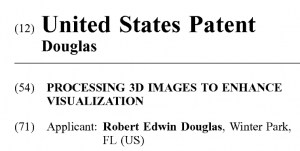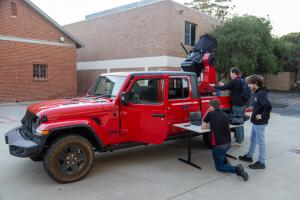
A fourth Soldier specific rendering method for nausea reduction
USA, August 7, 2023/EINPresswire.com/ — TPMI is dedicated to improving several aspects of the Integrated Visual Augmentation System (IVAS) program to make it a major success. An immediate item of concern for the program is solving the nausea problem many Soldiers are facing while wearing the IVAS. Fortunately, TPMI has solutions.
In an August 4th article, TPMI discussed a problematic scenario of errors in overlap. If real world objects in the foreground do not appropriately hide portions of virtual objects in the distance, then a confusing and distorted appearance of the virtual world can occur.
For example, consider a Soldier walking through an aspen tree forest and a virtual object placed within the forest at a distance 20 meters away. As the soldier passes a set of aspen trees or fallen branches in the foreground, the virtual object must seamlessly appear while there is line of sight and disappear while blocked by an aspen tree in the foreground. TPMI’s ‘124 patented “dynamic filtering” technology provides improved viewing of virtual objects when portions are blocked by near objects within the real world scene.
Traditionally, a single 3D volume was rendered for the left eye viewing position and right eye position. A user viewing a left eye image and right eye image on an extended reality headset would see the same volume, but from a slightly different perspective. These slightly different perspectives provide a “three-dimensional image” with depth in the user’s mind.
TPMI’s Soldier-specific 3D rendering algorithm can improve a range of scenarios encountered by the Soldier. For example, US Patent 10,657,731 provides methodology to render a first 3D virtual volume for the left eye and a different 3D virtual world for the right eye. So, the question arises — why would you ever want to render a different volume for the left eye image and right eye image? TPMI cleverly asked this question and solved it.
The answer – consider the scenario. A virtual object is at the north end of a building. A Soldier standing at the south end of the building and looking north pokes his head out so he can see just past the edge of a building with his left eye only. The 3D volume rendered for the left eye should include the virtual object, but the 3D volume rendered for the right eye should not. Through methodology in the ‘731 patent, this real world scenario can be appropriately modeled three dimensionally.
TPMI’s patent portfolio, including the ‘731 patent, provides technology to help seamlessly integrate virtual objects into the physical world. If a physical object foreground pops up, TPMI’s ‘124 patented “dynamic filtering” technology can appropriately render the virtual world and prevent overlap errors. If a physical object in the foreground blocks only one eye, TPMI’s flexible platform can 3D render different volumes for each eye.
If the IVAS system is upgraded with TPMI’s patented technology, the virtual world and physical world will be seamlessly integrated yielding an improved viewing experience for the Soldier and importantly reduce Soldier nausea.
In order for Soldiers to adopt the IVAS, the problem of nausea absolutely must be eliminated. TPMI aims to work with PEO Soldier to enhance the IVAS system by integrating this novel technology into the IVAS system.
About the author: Dr. Robert Douglas is a West Point graduate who: fought as an Infantryman in Vietnam with US units and a Vietnam recon company; worked in a combat development agency; studied nuclear war in the Joint Chiefs of Staff; patrolled in the desert for the UN in the Middle East with Russian war planners; and developed a system to assist Air Force space exercises. After leaving the service he spent over three decades in the defense industry rising from manager to vice president working programs ranging from sensors and missiles for Air Force aircraft to rubbing shoulders with Army scientists; to Army helicopters and combat vehicles as well as rapid target acquisition, night vision goggles and weapon sights.
Dr. Robert Douglas
TPMI
email us here
Visit us on social media:
Twitter
LinkedIn
Other
![]()
Originally published at https://www.einpresswire.com/article/647982809/a-eighteenth-major-improvement-to-the-integrated-visual-augmentation-system



